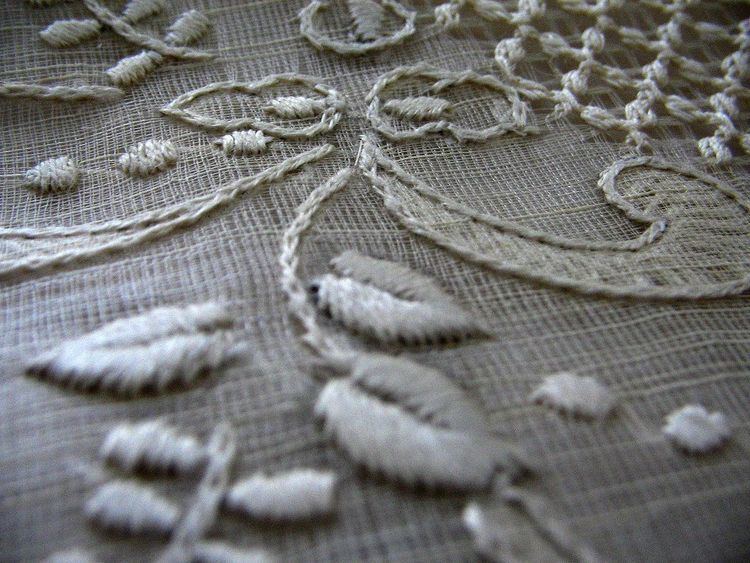 | ||
Piña is a fiber made from the leaves of a pineapple plant and is commonly used in the Philippines. It is sometimes combined with silk or polyester to create a textile fabric. Piña's name comes from the Spanish word piña which means pineapple.
Contents
Production methods
Since piña is from a leaf, the leaf has to be cut first from the plant. Then the fiber is pulled or split away from the leaf. Most leaf fibers are long and somewhat stiff. Each strand of the piña fiber is hand scraped and is knotted one by one to form a continuous filament to be handwoven and then made into a piña cloth.
Producers
Kalibo, Aklan, is the main and the oldest manufacturer/weaver of piña cloth in the Philippines which are being exported to various parts of the world most particularly North America, and Europe. Piña weaving is an age-old tradition which was recently revived in the past 20 years.
Pineapple silk is considered the queen of Philippine fabrics and is considered the fabric of choice of the Philippine elite. During the 1996 APEC summit held in the Philippines, world leaders donned Barong Tagalog made of piña sourced from Kalibo during the group photo.
Producers include La Herminia Piña Weaving Industry, Malabon Pina Producers and Weavers Association, Reycon's Piña Cloth and Industry, and Rurungan sa Tubod Foundation.
Uses
A major use for piña fabric is in the creation of the Barong Tagalog and other formal wear in the Philippines. It is also used for other table linens, bags, mats and other clothing items, or anytime that a lightweight, but stiff and sheer fabric is needed.
